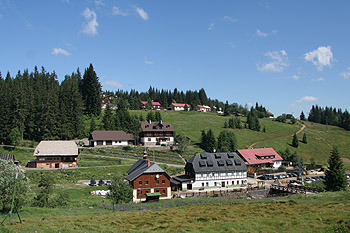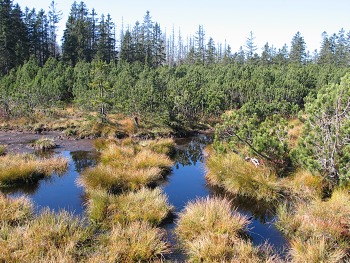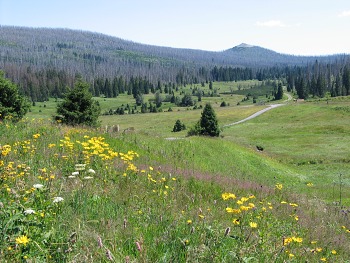MODRAVA | Mikroregion Šumava Západ
Menu
Menu
Levý sloupec - Modrava
Contact
Ing. Jaroslav Tachovský
Chairman of the Coordinating Council
Modrava 63
341 92 Kašperské Hory
E-mail: mikroregion@sumavanet.cz
Tel. : +420 602 680 178
Modrava

Modrava (980 m above sea level) a typical mountainous village covering 163 hectares. It is one of the more prominent resorts for summer and winter tourism in the Šumava National Park. The history of the village has been closely connected with the following settlements and constructions: Modrava, Filipova Huť, Březník, Roklanská chata, Vchynice – Tetov, Rybárna and Javoří Pila. First records of the village are in the connection with the abundance of fish in the local rivers and deer in the local woods. A further development of this area came with the trade route established by the Emperor Charles IV in the second half of the 14th century. The biggest boom came in the second half of the 18th century when Modrava and its surroundings were owned by the Earl of Kinsky and the glass making industry became dominant in the area. After the decline of this industry and the arrival of new owners, the Schwarzenbergs, it was the exploitation of local forests that became the main industry of the area. In 1799 the famous construction engineer Ing. Rosenaur initiated the construction of the Vchynicko-tetovský canal to act as a fairway for floating logs. The construction of the 14.4 long canal was finished in 1801 and it served its purpose till the first half of the 20th century. Water reservoirs had to be built to enable the fairway to work. The biggest reservoir was Luzenský, and the most famous one was Ptačí described in the novel by Karel Klostermann. Nowadays, the canal is classed as a technically and culturally valuable site.

In between the wars and the following political arrangements after WWII the village nearly ceased to exist. The original number of nearly two thousand inhabitants living in the village before the war has been reduced to mere seventy who live in the village nowadays. Nevertheless, the village has maintained its character of a mountainous village.
The most dominant feature of the village is Klostermannova chata (Klostermann Chalet) built at around 1924 as a chalet for the Club of Czechoslovak Tourists. The building was built by the architect Bohuslav Fuchs and in 1994 it became a cultural monument together with the buildings along the Roklan Stream which used to belong to the famous Bienert Factor for manufacturing sounding boards.

The most touristy place of the entire area is undoubtedly Březník described in the famous novel by Karel Klostermann (1848-1923) called Ze světa lesních samot (From the World of Forest Wilderness). The unique countryside around the Luzenský Stream looking out at the stony hill of Luzný (1373 m above sea level.) with the complex of Alpine forests (1370 m above sea level) and the occurrence of the most precious animal and biological species make this place the true heart of the National Park. The Alpine forests covering 3 615 hectares hide the most precious parts of the Šumava countryside, the Alpine beat bogs protected by the International Ramsar Treaty of Protection of Wetlands.
Modrava is a popular tourist destination in the Šumava National Park thanks to its wonderful position, its hospitality and the level of services on offer.


